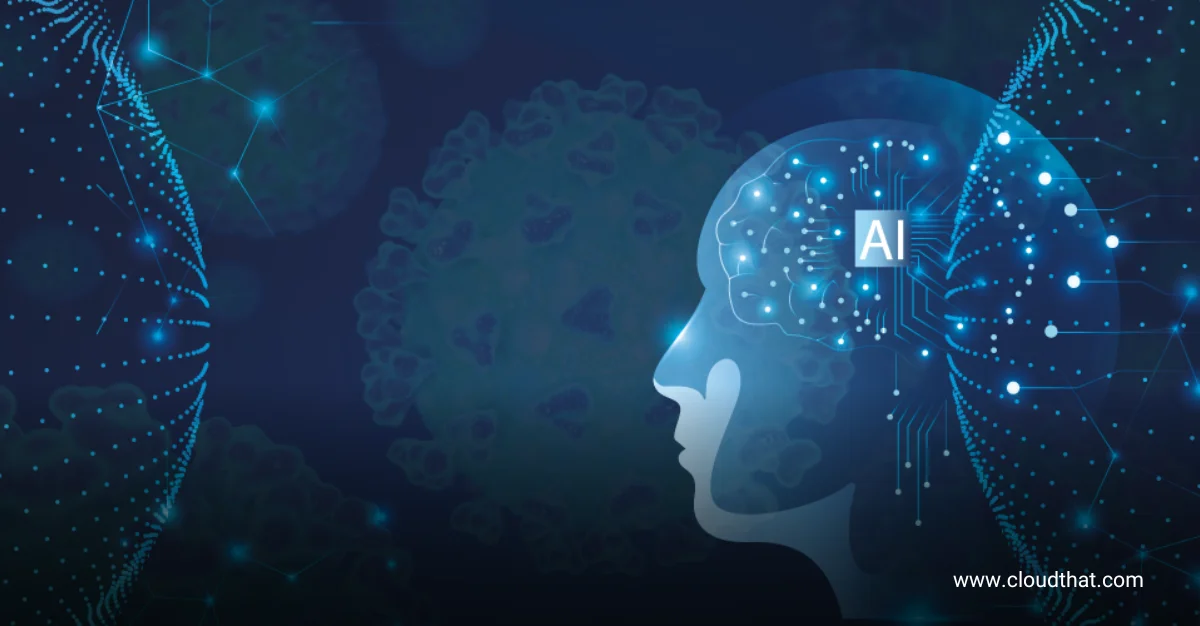|
Voiced by Amazon Polly |
Overview
In modern data management, the ability to generate automated SQL queries from an Entity-Relationship Diagram (ERD) streamlines database management, optimizes queries and ensures that business intelligence tools can leverage the data warehouse more effectively.
Pioneers in Cloud Consulting & Migration Services
- Reduced infrastructural costs
- Accelerated application deployment
Introduction
With the help of AI models like Anthropic’s Claude Sonnet v3.5, we can automate the query generation process for various database management systems such as SQL, Snowflake, and Salesforce. In this blog, we’ll cover how you can utilize Anthropic Sonnet v3.5 to convert your generated ERD into useful, automated queries for these platforms.
This blog explores modern data management, automating the generation of database queries based on an Entity-Relationship Diagram (ERD), which is essential for speeding up processes, ensuring accuracy, and improving consistency across various platforms. Using advanced AI models like Anthropic’s Claude Sonnet v3.5, you can efficiently automate query generation for SQL, Snowflake, and Salesforce environments. This approach simplifies database interactions, reduces manual intervention, and ensures that queries remain optimized and error-free, even as database structures evolve.
Why Automate Query Generation?
Automating query generation based on your ERD offers several key benefits:
- Speed and Efficiency: Eliminates manual query writing for common operations (like SELECT, INSERT, UPDATE, DELETE), saving valuable development time.
- Reduced Errors: Ensures that queries are syntactically and semantically correct based on the relationships and constraints in the schema.
- Consistency Across Platforms: Ensures that queries are optimized for the specific database management system, such as SQL, Snowflake, or Salesforce, even though each has unique nuances.
- Adaptability: Allows the queries to evolve as the data warehouse schema changes, ensuring the queries remain up to date.
In this second part of the blog series, we’ll walk through the prerequisites and steps involved in automating query generation for your ERD using Anthropic Claude Sonnet v3.5.
Prerequisites for Automating Query Generation
- ERD Generation with Claude Sonnet v3.5
Before automating query generation, you need an ERD that reflects the structure and relationships of your data warehouse schema. If you haven’t already generated an ERD, refer to the first part of this series, which explains how to use Claude Sonnet v3.5 to create an ERD for your schema.
For example, based on the sample schema provided for a retail company:
- Customers table with CustomerID, Name, Email, Phone.
- Orders table with OrderID, OrderDate, CustomerID, TotalAmount.
- Products table with ProductID, ProductName, Price.
- OrderDetails table with OrderDetailID, OrderID, ProductID, Quantity, Price.
The relationships include:
- Customers ↔ Orders: One-to-Many
- Orders ↔ OrderDetails: One-to-Many
- Products ↔ OrderDetails: Many-to-One
- Understanding Database Query Structures
Different database management systems require slightly different SQL structures. While standard SQL works for most relational databases, platforms like Snowflake and Salesforce have their syntax and optimizations. Understanding the basic differences in these platforms is essential.
- SQL: The general-purpose querying language for relational databases like MySQL, PostgreSQL, etc. SQL queries follow the standard syntax for SELECT, INSERT, UPDATE, and DELETE operations.
- Snowflake: A cloud-based data warehouse that uses a SQL-based query language but has optimizations like Warehouse Scaling and specific commands for time travel and data sharing.
- Salesforce: Primarily known as a CRM platform, Salesforce has its own SOQL (Salesforce Object Query Language), which differs from traditional SQL. SOQL is used to query data stored in Salesforce’s objects.
- Schema Information
Ensure that you have detailed schema information ready. This includes:
- Tables (Entities).
- Columns, their data types, and constraints like primary keys (PK) and foreign keys (FK).
- Relationships between the tables, including one-to-one, one-to-many, and many-to-many.
With this information, Claude Sonnet v3.5 can understand how to generate queries that respect the schema’s integrity.
Automating Query Generation with Claude Sonnet v3.5
Step 1: Define the Input Prompt for Claude Sonnet v3.5
To generate queries, you first need to craft a prompt instructing Claude Sonnet v3.5 to create specific queries for your data warehouse. This input should be as detailed as possible, specifying the type of query (SELECT, INSERT, etc.), the target database (SQL, Snowflake, Salesforce), and the relationships between entities.
For example, if you want Claude to generate a query to retrieve all orders for a specific customer, you would input the following:
“Generate an SQL query that selects all orders for a customer with a given CustomerID from the Orders and Customers tables. The schema is as follows:
– Customers(CustomerID, Name, Email, Phone),
– Orders(OrderID, CustomerID, OrderDate, TotalAmount),
– One-to-Many relationship between Customers and Orders on CustomerID.”
This prompt gives Claude Sonnet v3.5 all the necessary details to understand the entities involved and the relationships between them.
Step 2: Query Generation for SQL
Here’s an example of a prompt you might submit to Claude Sonnet v3.5 for generating a SQL query:

Once you submit the prompt, Claude Sonnet v3.5 will return a query like this:

This SQL query retrieves all orders for a specific customer, using the CustomerID foreign key to join the Orders and Customers tables. The :CustomerID is a placeholder for the specific ID you want to query.
Step 3: Query Generation for Snowflake
For Snowflake, the query will be optimized to take advantage of the platform’s unique features. You might ask Claude Sonnet v3.5 to optimize the query for Snowflake’s data warehouse:

The model will return the Snowflake query output like this:

Snowflake handles the JOIN operation efficiently, scaling the compute resources to process large datasets if needed. Additionally, if you used Snowflake’s time travel feature, you could modify the query to look at historical data.
Step 4: Query Generation for Salesforce (SOQL)
Salesforce uses SOQL for querying data. Here’s an example of a prompt you might submit to Claude Sonnet v3.5 for generating a SOQL query:

The Model will generate the Salesforce query output like this:

In Salesforce, the SOQL syntax focuses on querying from objects, not tables, and uses more simplified querying features, such as filtering with the WHERE clause.
Conclusion
Automating query generation using Anthropic’s Claude Sonnet v3.5 offers a powerful way to streamline database operations, optimize queries, and adapt to changing schema structures.
Drop a query if you have any questions regarding Anthropic Claude Sonnet v3.5 and we will get back to you quickly.
Making IT Networks Enterprise-ready – Cloud Management Services
- Accelerated cloud migration
- End-to-end view of the cloud environment
About CloudThat
CloudThat is an award-winning company and the first in India to offer cloud training and consulting services worldwide. As a Microsoft Solutions Partner, AWS Advanced Tier Training Partner, and Google Cloud Platform Partner, CloudThat has empowered over 850,000 professionals through 600+ cloud certifications winning global recognition for its training excellence including 20 MCT Trainers in Microsoft’s Global Top 100 and an impressive 12 awards in the last 8 years. CloudThat specializes in Cloud Migration, Data Platforms, DevOps, IoT, and cutting-edge technologies like Gen AI & AI/ML. It has delivered over 500 consulting projects for 250+ organizations in 30+ countries as it continues to empower professionals and enterprises to thrive in the digital-first world.
FAQs
1. What is Anthropic Sonnet v3.5?
ANS: – Anthropic Sonnet v3.5 is an advanced AI model designed for tasks like natural language understanding, query generation, and more, allowing automation of complex processes like SQL query creation.
2. How does the model generate SQL queries?
ANS: – You provide a detailed prompt with information about your database schema, and the model automatically generates queries based on the relationships in your schema.

WRITTEN BY Aditya Kumar
Aditya works as a Senior Research Associate – AI/ML at CloudThat. He is an experienced AI engineer with a strong focus on machine learning and generative AI solutions. He has contributed to a wide range of projects, including OCR systems, video behavior analysis, confidence scoring, and RAG-based chatbots. He is skilled in deploying end-to-end ML pipelines using services like Amazon SageMaker and Amazon Bedrock. With multiple AWS certifications, he is passionate about leveraging cloud and AI technologies to solve complex business problems. Outside of work, Aditya stays updated on the latest advancements in AI and enjoys experimenting with emerging tools and frameworks.


 Login
Login


 October 23, 2024
October 23, 2024 PREV
PREV










Comments